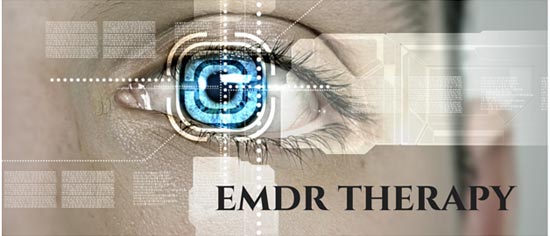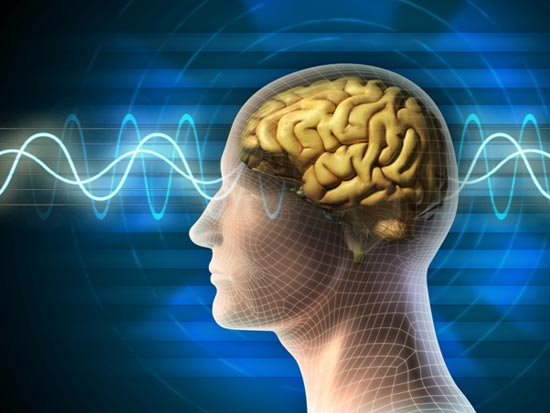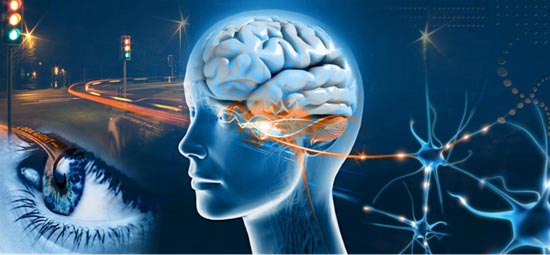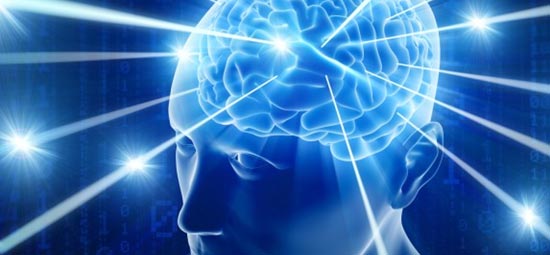EMDR Theraphy
Eye Movement Desensitization and Reprocessing EMDR

Eye Movement Desensitization and Reprocessing (EMDR) is a psychotherapy treatment that was originally designed to alleviate the distress associated with traumatic memories (Shapiro, 1989a, 1989b). Shapiro’s (2001) Adaptive Information Processing model posits that EMDR therapy facilitates the accessing and processing of traumatic memories and other adverse life experience to bring these to an adaptive resolution. After successful treatment with EMDR therapy, affective distress is relieved, negative beliefs are reformulated, and physiological arousal is reduced.
During EMDR therapy the client attends to emotionally disturbing material in brief sequential doses while simultaneously focusing on an external stimulus. Therapist directed lateral eye movements are the most commonly used external stimulus but a variety of other stimuli including hand-tapping and audio stimulation are often used (Shapiro, 1991). Shapiro (1995, 2001) hypothesizes that EMDR therapy facilitates the accessing of the traumatic memory network, so that information processing is enhanced, with new associations forged between the traumatic memory and more adaptive memories or information. These new associations are thought to result in complete information processing, new learning, elimination of emotional distress, and development of cognitive insights. EMDR therapy uses a three pronged protocol: (1) the past events that have laid the groundwork for dysfunction are processed, forging new associative links with adaptive information; (2) the current circumstances that elicit distress are targeted, and internal and external triggers are desensitized; (3) imaginary templates of future events are incorporated, to assist the client in acquiring the skills needed for adaptive functioning.
For Laypeople:

EMDR (Eye Movement Desensitization and Reprocessing) is a psychotherapy that enables people to heal from the symptoms and emotional distress that are the result of disturbing life experiences. Repeated studies show that by using EMDR therapy people can experience the benefits of psychotherapy that once took years to make a difference. It is widely assumed that severe emotional pain requires a long time to heal. EMDR therapy shows that the mind can in fact heal from psychological trauma much as the body recovers from physical trauma. When you cut your hand, your body works to close the wound. If a foreign object or repeated injury irritates the wound, it festers and causes pain. Once the block is removed, healing resumes.
EMDR therapy demonstrates that a similar sequence of events occurs with mental processes. The brain’s information processing system naturally moves toward mental health. If the system is blocked or imbalanced by the impact of a disturbing event, the emotional wound festers and can cause intense suffering. Once the block is removed, healing resumes. Using the detailed protocols and procedures learned in EMDR therapy training sessions, clinicians help clients activate their natural healing processes.

More than 30 positive controlled outcome studies have been done on EMDR therapy. Some of the studies show that 84%-90% of single-trauma victims no longer have post-traumatic stress disorder after only three 90-minute sessions. Another study, funded by the HMO Kaiser Permanente, found that 100% of the single-trauma victims and 77% of multiple trauma victims no longer were diagnosed with PTSD after only six 50-minute sessions. In another study, 77% of combat veterans were free of PTSD in 12 sessions.
There has been so much research on EMDR therapy that it is now recognized as an effective form of treatment for trauma and other disturbing experiences by organizations such as the American Psychiatric Association, the World Health Organization and the Department of Defense. Given the worldwide recognition as an effective treatment of trauma, you can easily see how EMDR therapy would be effective in treating the “everyday” memories that are the reason people have low self-esteem, feelings of powerlessness, and all the myriad problems that bring them in for therapy. Over 100,000 clinicians throughout the world use the therapy. Millions of people have been treated successfully over the past 25 years.

EMDR therapy is an eight-phase treatment. Eye movements (or other bilateral stimulation) are used during one part of the session. After the clinician has determined which memory to target first, he asks the client to hold different aspects of that event or thought in mind and to use his eyes to track the therapist’s hand as it moves back and forth across the client’s field of vision.
In successful EMDR therapy, the meaning of painful events is transformed on an emotional level. For instance, a rape victim shifts from feeling horror and self-disgust to holding the firm belief that, “I survived it and I am strong.” Unlike talk therapy, the insights clients gain in EMDR therapy result not so much from clinician interpretation, but from the client’s own accelerated intellectual and emotional processes. The net effect is that clients conclude EMDR therapy feeling empowered by the very experiences that once debased them. Their wounds have not just closed, they have transformed. As a natural outcome of the EMDR therapeutic process, the clients’ thoughts, feelings and behavior are all robust indicators of emotional health and resolution—all without speaking in detail or doing homework used in other therapies. As this happens, for reasons believed by a Harvard researcher to be connected with the biological mechanisms involved in Rapid Eye Movement (REM) sleep, internal associations arise and the clients begin to process the memory and disturbing feelings.
Treatment Description:

EMDR therapy combines different elements to maximize treatment effects. A full description of the theory, sequence of treatment, and research on protocols and active mechanisms can be found in F. Shapiro (2001) Eye movement desensitization and reprocessing: Basic principles, protocols and procedures (2nd edition) New York: Guilford Press.